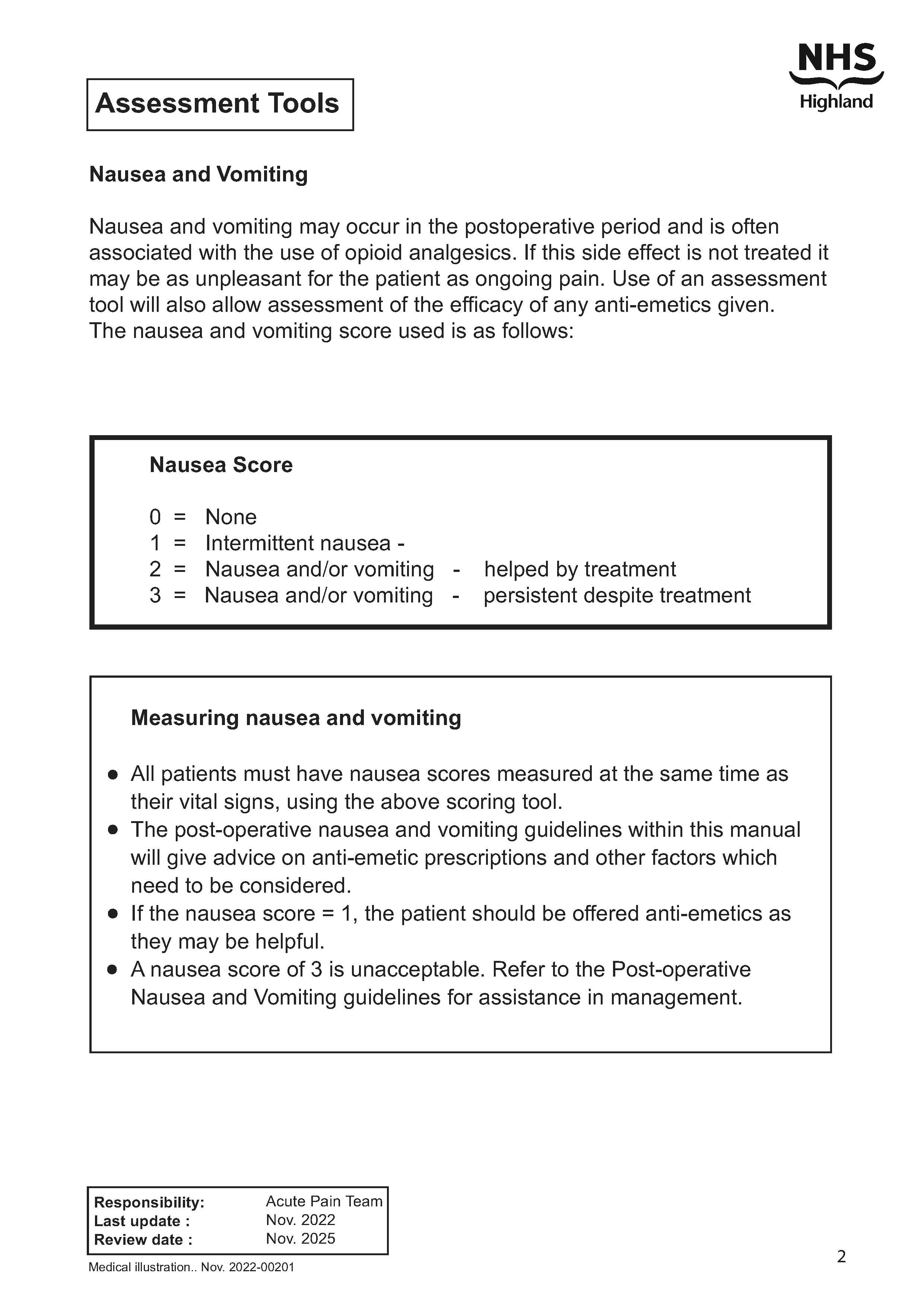Please note this guidance is for use in in-patients and is not designed for managing patients with chronic pain
This guidance is for adult patients with dementia who cannot verbalise.
There is evidence to suggest that people with dementia are likely to receive less pain relief in hospital than people who do not have dementia and this becomes a greater problem the more severe the cognitive impairment (Scherder et al, 2005). Hence, the more confused and disorientated, a person is the less likely they are to receive effective pain control.
Pain assessment for people with dementia may be more complex and should be based on the principles of effective communication, allowing time to assess pain and using pain assessment tools.
In the same way as assessing the cognitive status of a person, when assessing for pain the room should be well lit and communication aids such as glasses and hearing aids should be in place.
Common behaviours associated with pain are vocalisations, grimacing, flinching, guarding of painful part, aggressive behaviour and restlessness, and pulling out tubes from painful parts of the body.
When attempting to detect pain in those with advanced dementia, nurses need to focus on such areas as noisy breathing, negative vocalisation, absence of relaxed body posture and looking tense and fidgeting.
Many people with cognitive impairment who can report the presence of pain have difficulty in quantifying their pain. This would include pain intensity on a 0-10 scale. There are pain assessment scales specifically designed for people with dementia. The Abbey Pain Scale is pain assessment tool for measuring pain in people with dementia who can not verbalise.
Pain Assessment
- Round the clock medication as opposed to ‘as required’.
- Observe facial expression.
- Enquire systematically about whether they are in pain.
- In the case of major surgery it is important to give pain medication on a scheduled basis.
- Obtain as much information from relatives and carers to assist you in recognising when the person with dementia may be distressed.
The Abbey Pain Scale can be accessed under resources.
Pain assessment in patients who are unable to communicate/express their pain can be particularly challenging.
For example, patients with dementia or patients with other languages. Observations such as facial expressions, behavioural or vital signs can be useful.
Other pain assessment tools such as verbal rating scale and visual analogue scale can be used.
At Raigmore Hospital the Acute Pain Team includes:
- Consultant Anaesthetist - Department of Anaesthesia
- Clinical Nurse Specialists, Acute Pain Service
- Senior Pharmacist - Pharmacy Department
Advice can be sought in office hours - 08.00 – 16.00 (page 1003 or 6056)
out of hours please contact the ITU anaesthetist.
- For information in treating pain in children, see Paediatric Pain Guidelines.
- For information in other languages, contact the Acute Pain Team

At Raigmore Hospital the Acute Pain Team includes:



